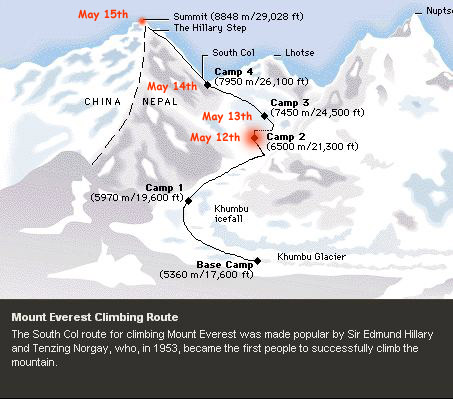|
Tom called from Camp 2 about 12:15 am Pacific Daylight Time (about 1pm in Nepal) Wednesday to let us know that they have begun their summit bid. They are pacing themselves to arrive on the summit on May 15th or 16th to take advantage of a favorable "weather window" with only light winds on the upper part of the mountain those days (check the weather links on the left side of this page for details). He reported that
all team members were feeling strong and are eager to get to the top.
A couple of very strong expeditions are ahead of them, which will make
the snow conditions easier for our team (if there is new snow, the first
teams will break trail for the others). |
|
|
The summit pyramid of Mount Everest |
|



